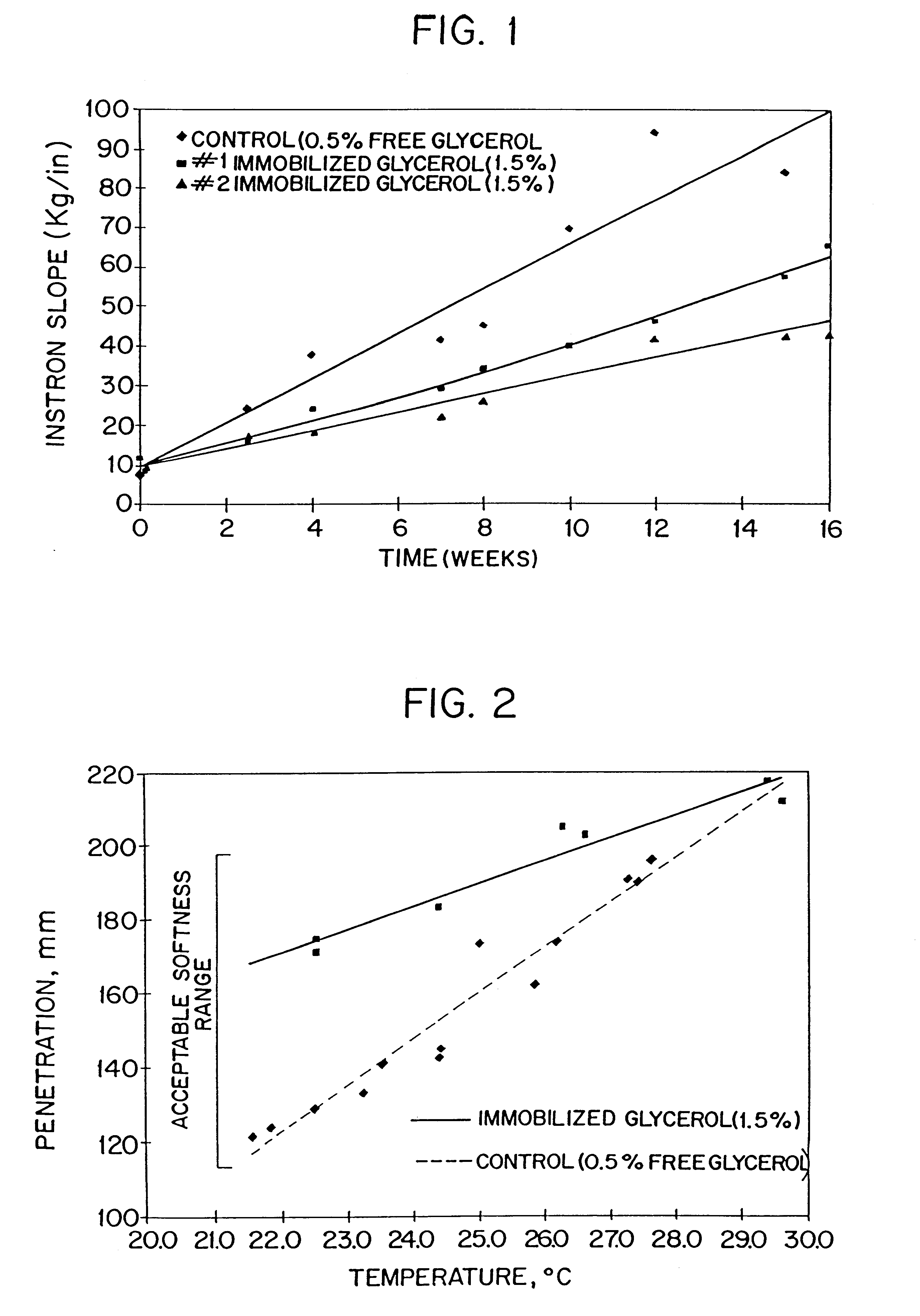Process of modifying texture of food products
a technology of texture and food products, applied in the field of process of modifying texture of food products, can solve the problems of deformation of food products, processing problems, stickiness, sliminess, etc., and achieve the effect of prolonging product shelf life, shape and texture, and no or
- Summary
- Abstract
- Description
- Claims
- Application Information
AI Technical Summary
Benefits of technology
Problems solved by technology
Method used
Image
Examples
example 1
a. 15 parts of carrageenan (Gelcarin DG654B provided by FMC Corporation, PA) is thoroughly mixed in 500 parts of dry glycerol at room temperature by using a high shear mixer.
b. 5000 parts of hydrogenated soya bean oil (used in the fudge) containing 0.5% Yelkin TS (from ADM) as an emulsifier is heated in a stirred tank to 140.degree. F.
c. Under continuous stirring, the suspension produced in step (a) is introduced in the oil phase described in step (b), and the speed of the mixer is fixed at 500 rpm, which produces a dispersion of glycerin droplets in the oil phase with the desired particle size.
d. Under continuous stirring, the temperature of the system is slowly brought up to 300.degree. F. As soon as this temperature is reached, the heat input is discontinued and the system is allowed to cool down to about 110.degree. F. while stirring is continued.
e. When the temperature reaches 110.degree. F., stirring is stopped and the system is allowed to decant. In less than 5 minutes, two d...
example 2
In a further test, two fudge mass batches were extruded. A control fudge (0.5% w / w free glycerol) was monitored for hardness, temperature, and width of the extruded rope after the extrusion step in order to establish a range of "softness" that does not cause problems in downstream processing. Another batch of fudge was prepared without any free glycerol and it was processed in the same way. The only difference was that 1.5% by weight immobilized glycerol (in the form of gel beads prepared as described in Example 1) was added to the fudge during the sugar crystallization period. During this period, the fudge is slowly mixed for about 20 to 30 minutes while its temperature is slowly reduced from about 150.degree. F. to about 70.degree. F. The hardness of the samples was measured by a Penetrometer which measures the depth of penetration of a metal cone into the sample for a constant period of time (20 sec). The softer the sample the higher the penetration depth recorded. The results ar...
PUM
 Login to View More
Login to View More Abstract
Description
Claims
Application Information
 Login to View More
Login to View More - R&D
- Intellectual Property
- Life Sciences
- Materials
- Tech Scout
- Unparalleled Data Quality
- Higher Quality Content
- 60% Fewer Hallucinations
Browse by: Latest US Patents, China's latest patents, Technical Efficacy Thesaurus, Application Domain, Technology Topic, Popular Technical Reports.
© 2025 PatSnap. All rights reserved.Legal|Privacy policy|Modern Slavery Act Transparency Statement|Sitemap|About US| Contact US: help@patsnap.com

